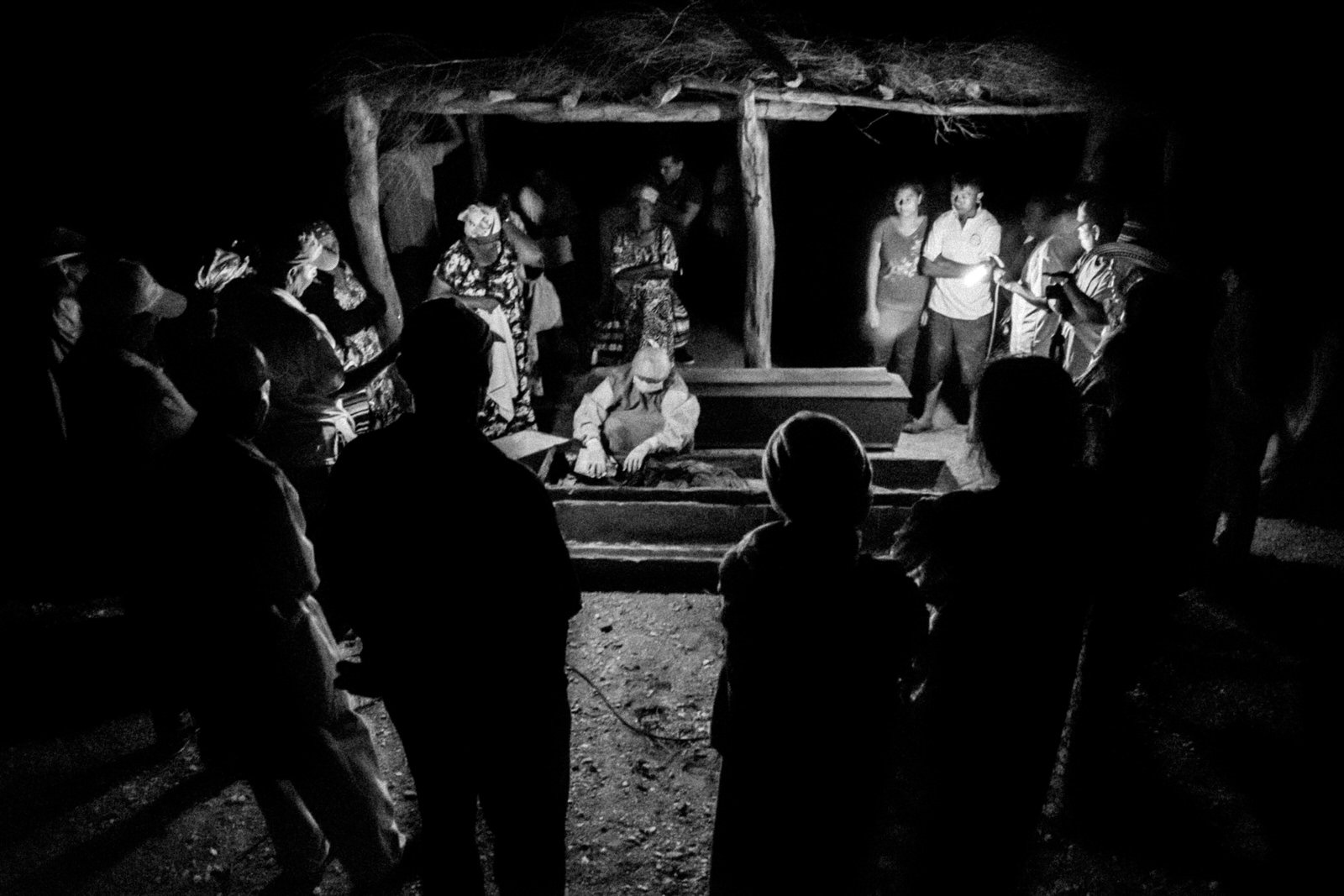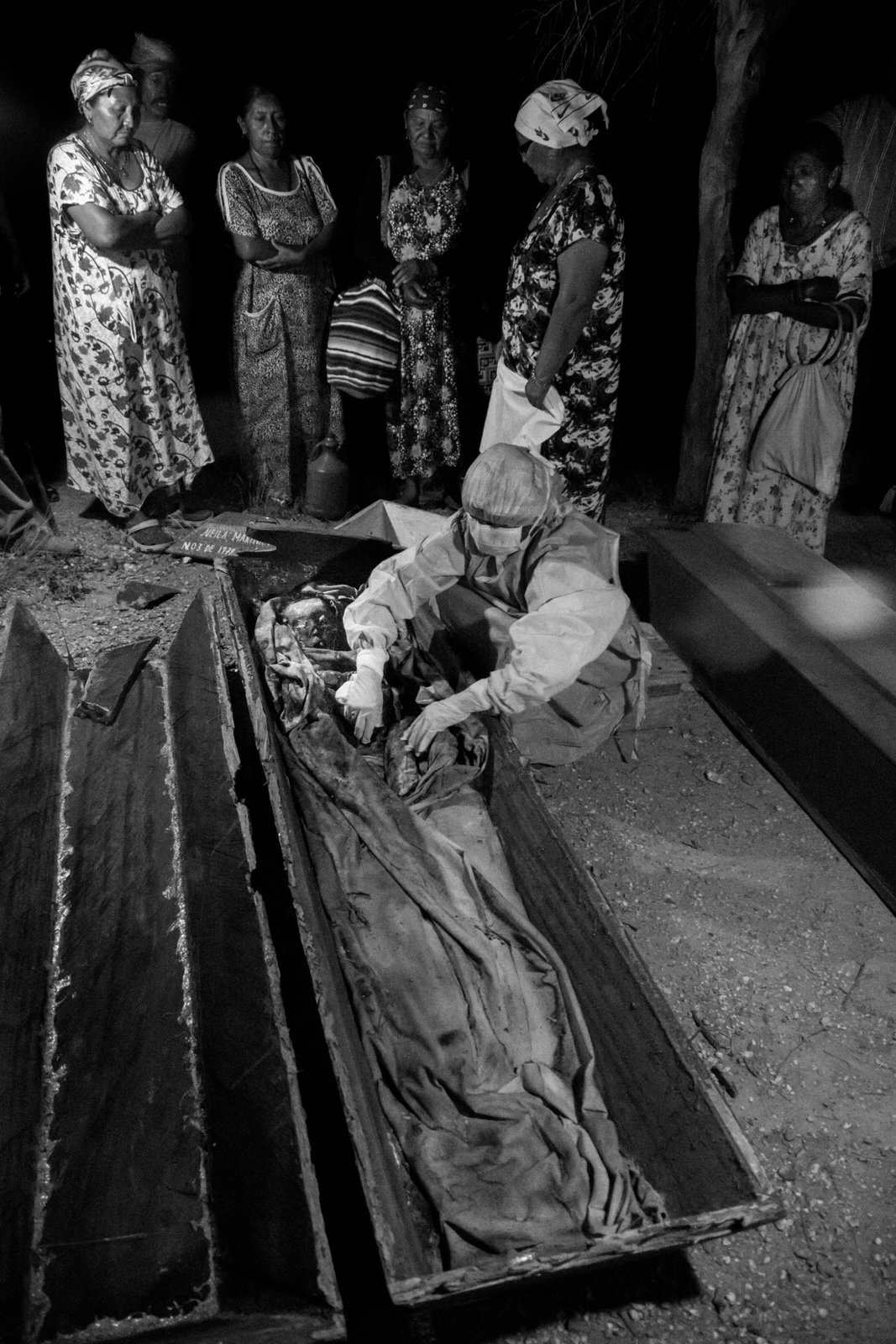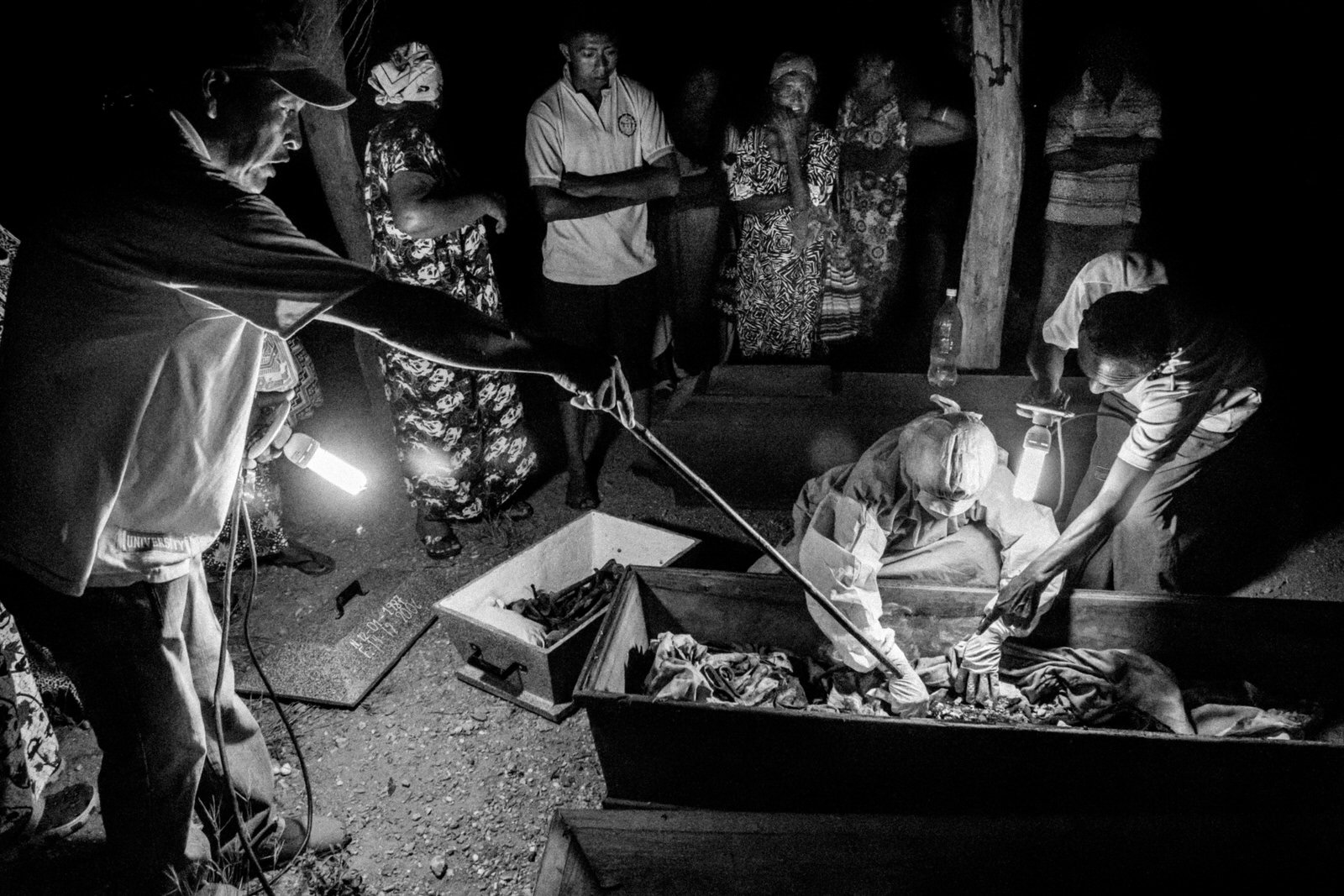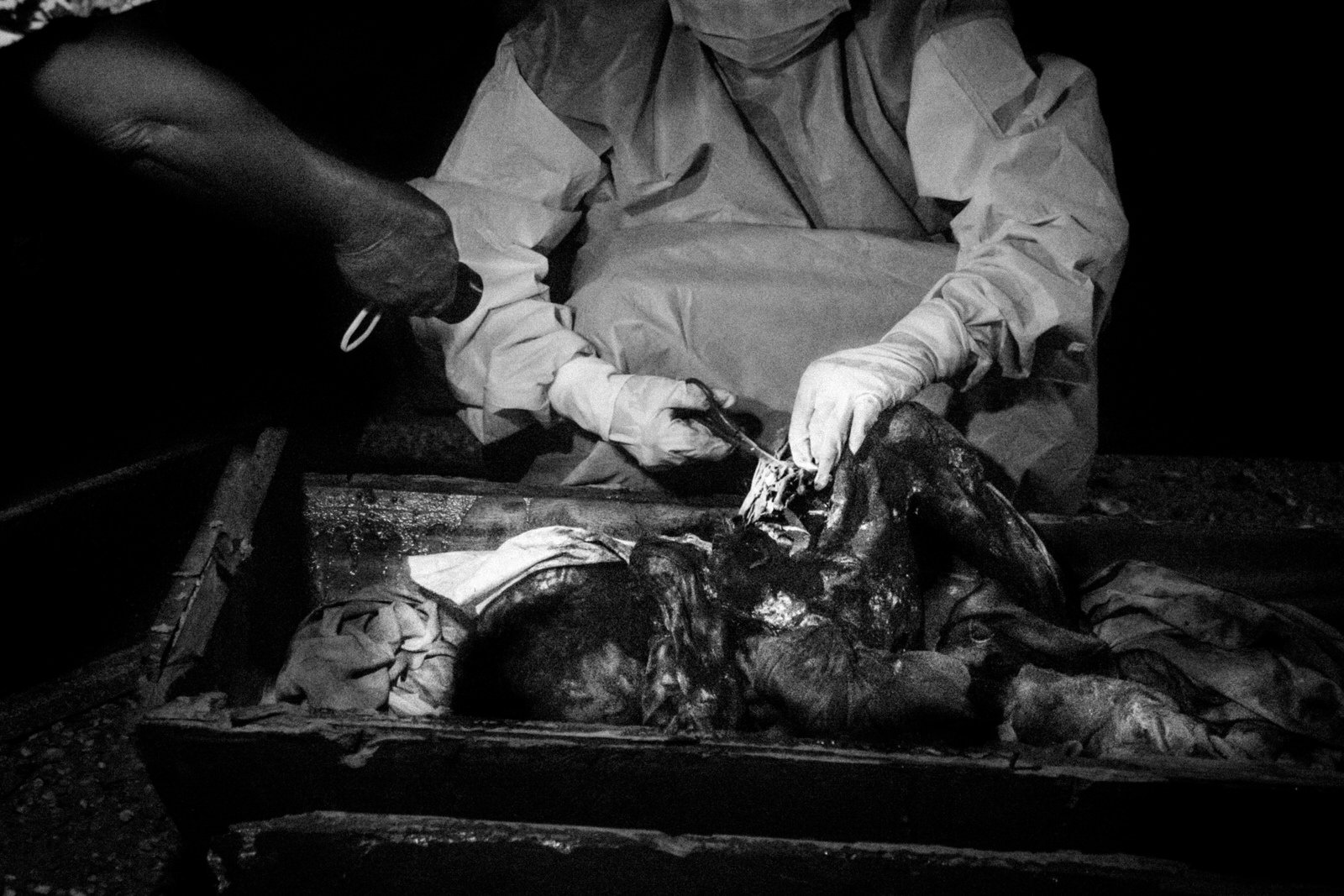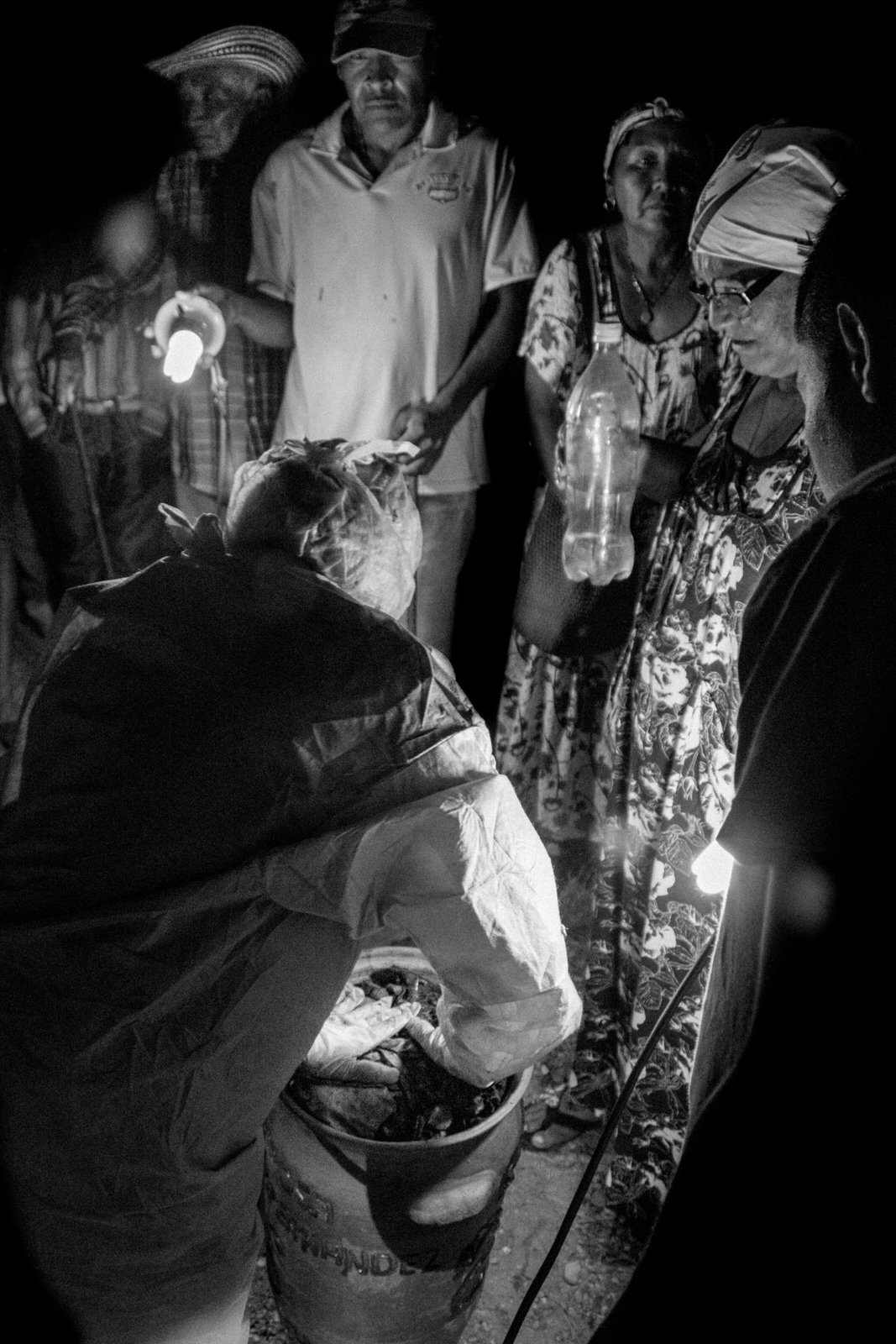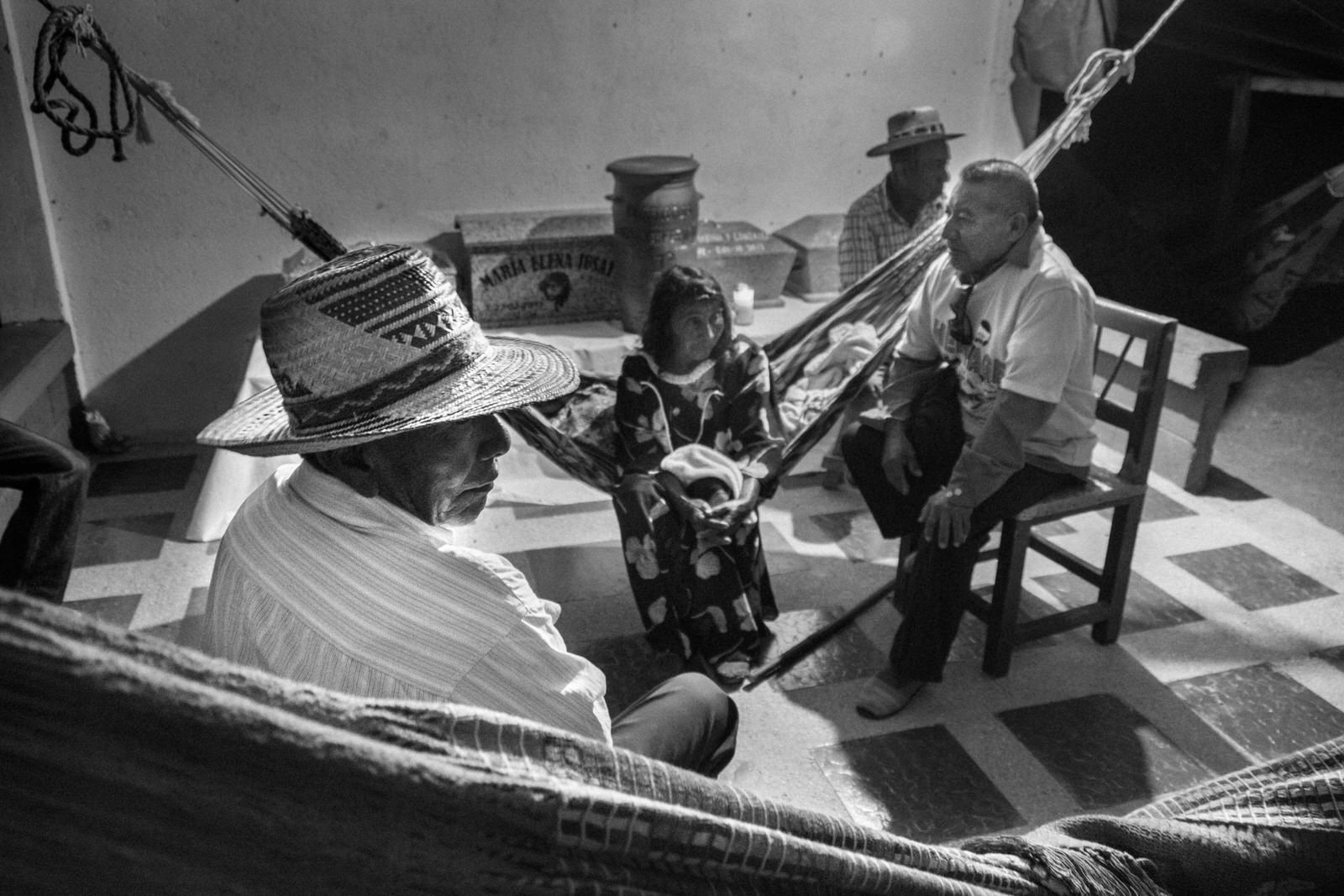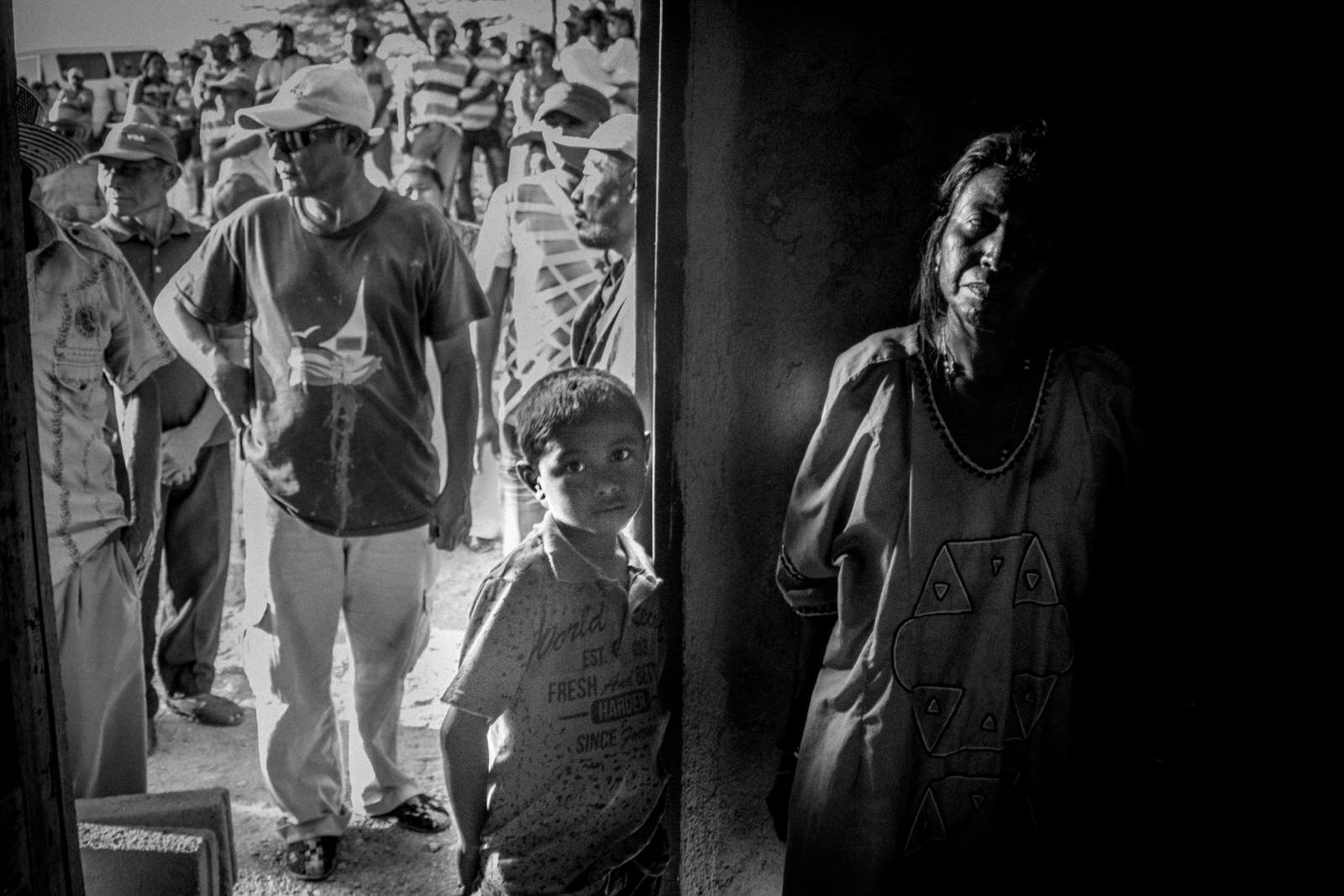THE Ayulaa: Wayuu’s Second Funeral Rite
There are few intimate visual records of the Ayulaa rite. This funeral practice from the Wayuu People in northern Colombia, has been passed down for generations and is a key component of the Wayuu cosmology and identity. The Ayulaa shows how, in the Wayuu tradition, the emotional handling of death and mourning makes no binary divisions between waking and sleeping nor the here and the hereafter and also reinforces de deep belief systems by which land is distributed.
In the depths of the Guajira desert, near the Macuira mountains, when a member of the Wayuu community dies, two journeys await the deceased. The first journey is a temporary farewell, in which the body is buried while the soul travels to the "Jepira", a region on the Caribbean Sea, off the coast of the Colombian Guajira peninsula at the northernmost point of the South American continent, where it is believed that the soul of the deceased is reunited with all deceased relatives and the animals the person had in life.
When the spirit is ready for its final departure, months or years later, it addresses a living relative through a special dream ("lapüt"). The relative who receives the dream then has the task of gathering the entire family clan during the second funeral ceremony, the Ayulaa.
During the Ayulaa, the body of the deceased is exhumed. The corpse is stripped of its flesh and veiled for two nights and three days. The exhumation rite must be performed by a woman of the clan chosen specifically for the task. Only her hands may come into contact with the body of the deceased. She must be careful not to touch the flesh of the deceased directly with her own skin and must not touch any of those present before being thoroughly washed by the other women assisting her during the ceremony. It is essential that she be prepared to approach the corpse without fear or repulsion; emotions that could cause her to be afraid or repulsed. These emotions could make her vulnerable to the liberated spirit of the deceased.
Once separated, the bones are placed in an ossuary, where they are veiled for two nights and three days in the “ranchería” where the family cemetery is located. During this time, the entire family clan arrives from the most remote areas of the region to attend the gathering. The woman must also remain awake during this time to prevent the spirit from haunting her dreams where it could harm her. Friends and family members take turns keeping her awake by telling her stories and singing songs.
After this time, and once the tributes to the deceased have been payed, the ossuary is buried alongside those of all her ancestors of her maternal filiation. The Ayulaa is a final departure, but also a return to the origin, because in the Wayuu matrilineal tradition, the origin of a person is not his place of birth, but the place where his maternal ancestors rest.



